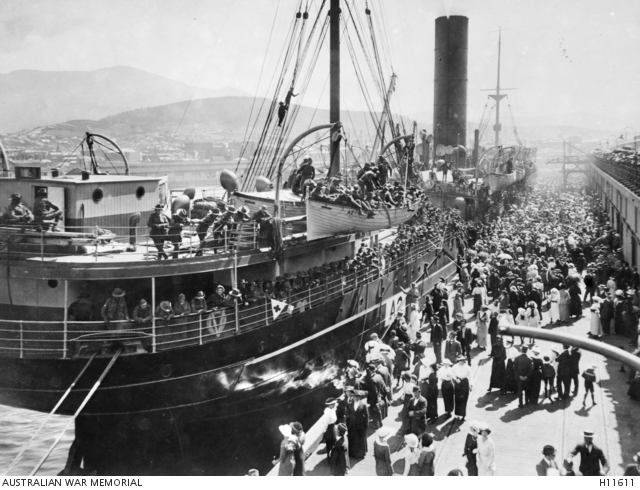Alfred John Hearps
Alfred Hearps was born in Forth, near the Tasmanian town of Devonport, in 1895, the son of Alfred Hearps and Eva Alice Russell. His father was an Aboriginal Australian but, despite the laws of the day which prevented Indigenous men from enlisting, Alfred's application was successful and he joined the AIF within weeks of the outbreak of the First World War, in August 1914.
Alfred was posted to the 12th Battalion, which was soon to be heavily involved in the Gallipoli campaign. On 25 April 1915 the 12th Battalion was among the first to land as the covering force in the pre-dawn darkness at ANZAC Cove. In the months after the landing, it seems that the strain of constant danger and the horrors of war took their toll on Alfred, and in August he was evacuated and hospitalised, having suffered a breakdown. Several weeks later he returned to his unit and served out the campaign until the evacuation in December 1915.
In 1916 the 12th Battalion fought in some of the bloodiest and most costly battles faced by Australians on the Western Front. On the Somme, in northern France, the battalion was involved in the struggle to take and hold the high ground at Pozières. Soon afterwards, in mid-August, they were tasked with taking the heavily defended German strongpoint known as Mouquet Farm, a short distance away.
During one of the assaults against this position Alfred, who had only just been promoted to second lieutenant, was killed.
Initially reported as missing, it took almost a year before Alfred's fate could be officially confirmed; this was not surprising as there were more than 6,000 ANZAC casualties in the battle for Mouquet Farm. Letters from his parents in the months that followed reflect their anguish as they sought to find out what had happened to their son. In a letter to the Red Cross, his mother wrote:
I am indeed heartbroken concerning my son's fate … I do not know what to think or what to do. Will you please let me know exactly what you think; the suspense is getting more than I can bear.
It was not until 1919 that Alfred's parents received an official letter informing them of their son's fate:
Whilst leading his platoon and when just at his objective, he was struck on the back of the neck by a piece of shrapnel. He lived for a little over an hour. He was buried near Mouquet Farm House.
Second Lieutenant Alfred Hearps has no known grave and is commemorated on the Villers-Bretonneux Memorial in France.
Activities for research and discussion
1. Imagine you were Alfred boarding HMAT Geelong in 1914. Not knowing the realities of war, what would you imagine war to be like? You can draw, sculpt, paint or write your answer.
2. Like many others, Alfred was evacuated from Gallipoli and hospitalised. During this campaign more men were evacuated due to shell shock than they were from battle wounds. Use the following links to research the conditions on Gallipoli to find out why this was the case:
- Online learning resource: Diary of an Anzac
- C. E. W. Bean, "The Story of the Anzac", Official History of Australia in the War of 1914–1918, vols I and II, Angus and Robertson, Sydney, 1938.
Sick and wounded men of the 12th Battalion on board a transport vessel, being taken from Gallipoli for hospital treatment.
3. Compare the conditions on Gallipoli to those on the Western Front. You may wish to refer to the following photographs of the Western Front in your answer.
Troops of the 12th Battalion resting in a village street before the first battle of the Somme.
4. Read Alfred's wounded and missing files:
-
What is the purpose of these files?
-
What incidents did many of the reports highlight as "proof" that Alfred was dead?
-
How could you determine Alfred's fate from these reports?



